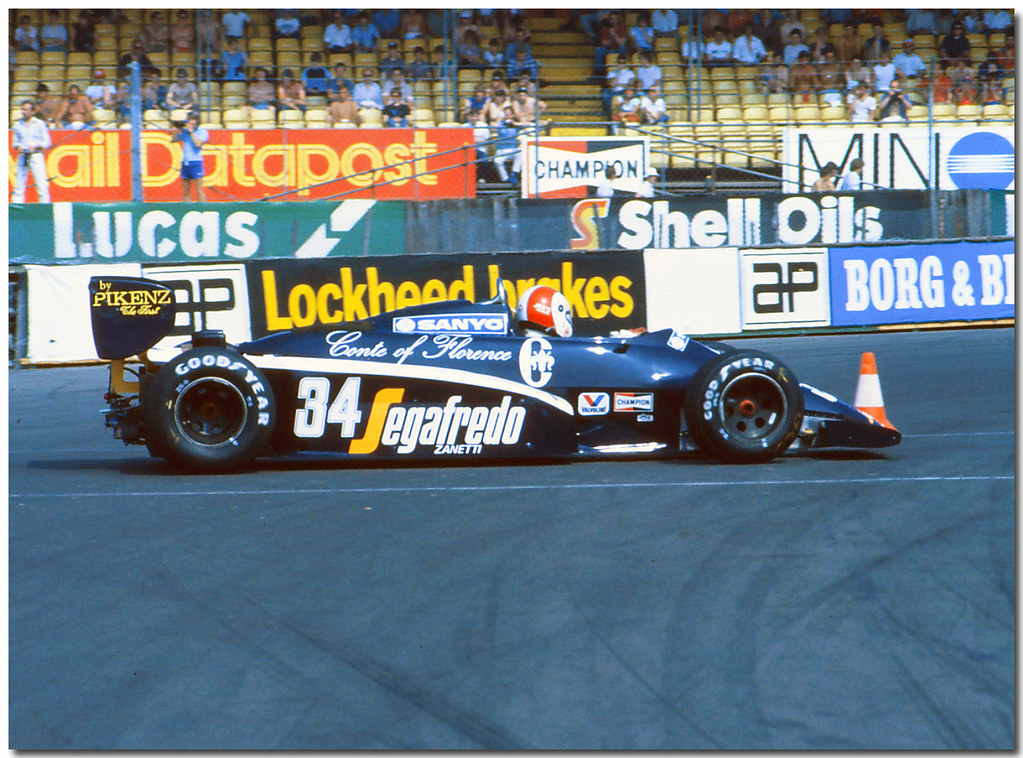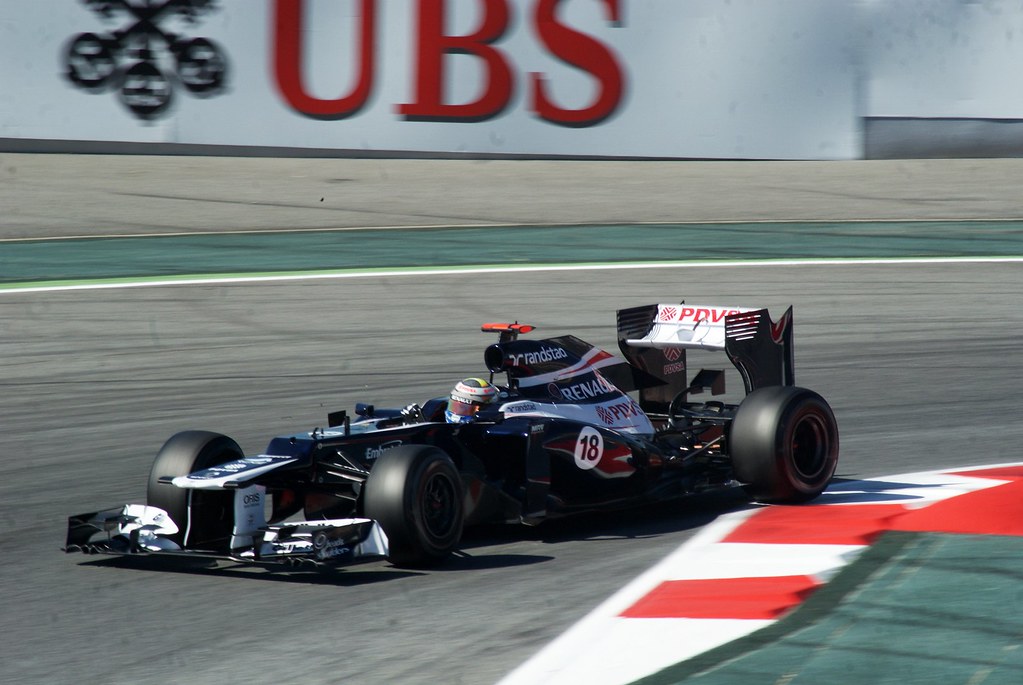vENEZUELAN F1 Drivers across history
Venezuela has produced three Formula 1 drivers over the years. The first was Ettore Chimeri, who made his sole Grand Prix start at the 1960 Argentine Grand Prix. Chimeri showed promise, but was tragically killed in a sports car race just two weeks later.
Over 20 years passed before Venezuela had another F1 driver. Johnny Cecotto made his debut in 1983 with the underfunded Theodore Racing team. He managed a surprise 6th place finish in just his second race. However, Theodore withdrew from F1 before the end of the season due to financial issues. Cecotto got another chance in 1984 with Toleman, but broke both legs in a qualifying crash at the British Grand Prix, abruptly ending his F1 career.
It was another long wait until Pastor Maldonado revived Venezuela’s presence in F1. He debuted with Williams in 2011 thanks to backing from Venezuelan state oil company PDVSA. In 2012, Maldonado stunned the F1 world by claiming pole position and winning the Spanish Grand Prix – Williams’ first victory in 8 years. However, crashes and incidents often overshadowed Maldonado’s raw speed. He drove for Lotus in 2014-2015 before funding dried up, forcing him out of F1.
Ettore Chimeri
Ettore Chimeri holds the distinction of being the first Venezuelan F1 driver. He was entered by the Maserati factory team for the 1960 Argentine Grand Prix, round 1 of that year’s championship. Driving a 250F, Chimeri performed respectably in practice and qualified 14th on the grid.
The race began well for Chimeri as he moved up several positions early on. However, the Maserati proved difficult to handle and Chimeri began suffering from fatigue issues. He was eventually forced to retire after completing 37 of 95 laps.
Tragically, Chimeri was killed just two weeks later in a crash during practice for a sports car race in Havana, Cuba. His promising career was cut short at age 33 after only a single Grand Prix start.
cHIMERI’S Impact
Although Ettore Chimeri’s F1 career was brief, he paved the way for future Venezuelan drivers. His debut in Buenos Aires marked the first of Venezuelan F1 drivers in the pinnacle of motorsports.
Chimeri proved that Venezuelans could be competitive even at the highest level. His pace in qualifying and early promise in the race was impressive considering he was driving a year-old car against the likes of Jack Brabham and Stirling Moss.
While a cruel twist of fate prevented Chimeri from showcasing his full potential, he wrote his name into the history books as Venezuela’s racing pioneer.
Johnny Cecotto
Following Ettore Chimeri’s brief appearance, over 20 years passed before the fans saw the next of Venezuelan F1 drivers on the grid. Johnny Cecotto had achieved great success in motorcycle Grand Prix racing, winning the 350cc world championship in 1975 at the age of just 19. By 1983, he decided to try his hand at four wheels.
1983
Cecotto made his F1 debut at the 1983 Brazilian Grand Prix driving for the struggling Theodore Racing outfit. The team had minimal resources, but Cecotto made an immediate impression by battling for a point in his second race at Long Beach. He qualified 13th and finished 6th, scoring Theodore’s first point in over two years.
Financial issues plagued Theodore throughout the season, preventing further progress. Still, Cecotto had demonstrated promise in uncompetitive machinery.
1984
For 1984, Cecotto joined Toleman – the team that launched Ayrton Senna’s F1 career. Driving the sluggish TG184, results were hard to come by. Cecotto qualified inside the top 10 at Monaco and Canada, but crashes and mechanical failures often intervened.
His time with Toleman came to an abrupt end at the British Grand Prix. During qualifying at Brands Hatch, Cecotto crashed heavily and suffered two broken legs. With his F1 career over after just 23 starts, he began focusing on touring cars.
While Johnny Cecotto’s Formula 1 record doesn’t stand out on paper, he made history as only Venezuela’s second driver in the sport. In inadequate cars, he took the fight to giants like Brabham, McLaren and Ferrari – securing points for minnows Theodore.
Along with trails blazed by Chimeri earlier, Cecotto’s gutsy drives captured the imagination of Venezuelans. His F1 cameos paved the way for the arrival of a certain Pastor Maldonado two decades later.

Pastor Maldonado
Following brief cameos by Chimeri and Cecotto decades earlier, Pastor Maldonado finally realized Venezuela’s dream of having a full-time F1 driver. The last of three Venezuelan F1 drivers delivered the best results for his country so far. Backed by state oil company PDVSA, he broke into the sport with Williams in 2011 then drove for Lotus from 2014 until funding collapsed in late 2015.
Path to Formula 1
Maldonado carved out a reputation as one of the most exciting drivers outside Formula 1 thanks to headline-grabbing speed in GP2 and Formula Renault 3.5. He won the 2010 GP2 title in dominant fashion with 6 feature race wins.
This caught the attention of Williams, who were seeking a pay driver to replace promising German Nico Hulkenberg alongside Rubens Barrichello for 2011. Maldonado brought around $46 million in backing from PDVSA and Venezuelan government – securing his F1 graduation and officially becoming the third of Venezuelan F1 drivers.
2011: Learning year
With only limited testing allowed, Maldonado understandably took time adjusting to F1 as a rookie in 2011. He struggled for pace in the uncompetitive FW33 chassis, reaching Q3 just twice and scoring a single point for 10th place at Spa.
However, Maldonado frequently outpaced experienced teammate Barrichello in qualifying as the season progressed. The highlights were a pair of Q3 appearances at Spain and Monaco – hinting at greater potential with a better car.
2012: Maiden victory
Maldonado remained with Williams for his sophomore season alongside newcomer Bruno Senna. The improved FW34 chassis proved to be a race winner and Maldonado stunned the F1 world by dominating the Spanish Grand Prix weekend.
He took a shock maiden pole by over half a second and controlled the race perfectly to become F1’s first Venezuelan winner. It remains Williams’ last victory to date, but tragically a fiery blaze broke out in the garage after the celebrations – slightly marring the historic result.
Maldonado added just three other points finish all season though while crashes and incidents were common. His raw speed was undeniable, but wild driving and lack of consistency over a full season remained weaknesses, and earned him the nickname of “Crashtor Maldonado”

2013-2015: Lotus years
Maldonado left Williams for Lotus in 2014 thanks to around $40 million in sponsorship from PDVSA. However, the team struggled badly as Renault’s new turbo V6 hybrid power units were woefully unreliable and down on power compared to Mercedes.
Driving a backmarker, Maldonado was often involved in incidents while battling furiously to make up places. PDVSA’s pullout due to Venezuela’s economic collapse left him without an F1 drive for 2016 as Renault reacquired Lotus and hired Kevin Magnussen instead.
tHE AFTERMATH
Love him or hate him, Pastor Maldonado left an indelible mark on Formula 1 history. His shock victory for Williams at the 2012 Spanish Grand Prix as a relative unknown was the stuff of fairytales.
Raw pace was never in doubt – as evidenced by front row starts in Spain and Singapore during his career. However, Maldonado’s frustrating lack of composure cost him shot at becoming a regular top driver.
Nonetheless, Maldonado earned his place in the record books with a combination of blistering speed, never-say-die racecraft and outlandish car control. He made sure Venezuela was noticed in F1 before PDVSA funding vanished just as he hit his prime years.
Venezuelan Grand Prix Performances
With South America home to legendary venues like Interlagos and Buenos Aires, one might assume Venezuela has hosted its fair share of Grand Prix racing. But that hasn’t been the case despite producing three Venezuelan F1 drivers – here’s why the country still awaits its first world championship event.
Lack of a Suitable Track
The main obstacle preventing Venezuela from holding an F1 race has been lack of a permanent circuit able to meet strict grade requirements. Only one permanent track exists – the Ricardo Tormo circuit in Valencia, which hosts national events.
While scenic street races in Caracas or Puerto La Cruz could be viable, infrastructure upgrades required make them unrealistic propositions currently. Building a new F1 facility is extremely expensive too for a developing country facing economic hardships of late.
Security Concerns
With Venezuela experiencing political unrest and civil disorder at times in recent years, security risks have also hindered any potential F1 events.
Regions outside major cities face risks from local gangs and paramilitary groups as law enforcement resources are stretched thinly. And even cities haven’t been immune to mass protests morphing into violence on occasions.
Unless the security environment stabilizes, Venezuela simply won’t be an appealing host nation for high-profile global sporting events for the near future at least.
Lack of Commercial Appeal
Venezuela has a population over 30 million strong – seemingly making it an attractive commercial market. But there are complicating factors which diminish its viability as an F1 host.
Poverty has risen sharply in recent times, greatly reducing the number of citizens with disposal income needed to afford pricey F1 tickets. And with most corporate headquarters located abroad, local sponsorship appeal takes a further hit.
With state oil company PDVSA slashing budgets while facing its own financial crunch, government funding for a grand prix also can’t be relied upon either currently.
The Future
Unless Venezuela’s economic fortunes are revived and stability restored, an F1 race unfortunately remains an extremely remote prospect.
Constructing a grade one circuit would likely cost over $250 million – an impossible ask right now. And regions outside Caracas may continue posing unacceptable security risks that deter international visitors.
However, Venezuela clearly has immense passion for motorsports. So if conditions improve in the coming decade or two, exciting new possibilities could open up on the F1 calendar.
Future Prospects
With Pastor Maldonado’s departure marking the end of Venezuela’s most recent F1 chapter, the future is uncertain regarding if or when another driver may emerge to carry the torch.
Economic and political issues have sent Venezuelan motorsports into decline, with drivers lacking avenues to showcase their talent. Until stability is restored, the talent pipeline looks set to remain blocked.
Falling Participation in Junior Formulas
Venezuela previously punched above its weight in European junior single-seater championships. But participation rates have dropped off sharply since Maldonado’s rise over a decade ago.
Lack of funding opportunities are making the sport unattainable for most aspiring talents. And with no national F3 series either, finding paths into car racing is harder than ever.
Arguably Venezuela’s two most promising prospects now race abroad – former F4 racer Manuel Maldonado in Spanish F4 and karter Guilherme Samaia in the competitive Italian arena.

